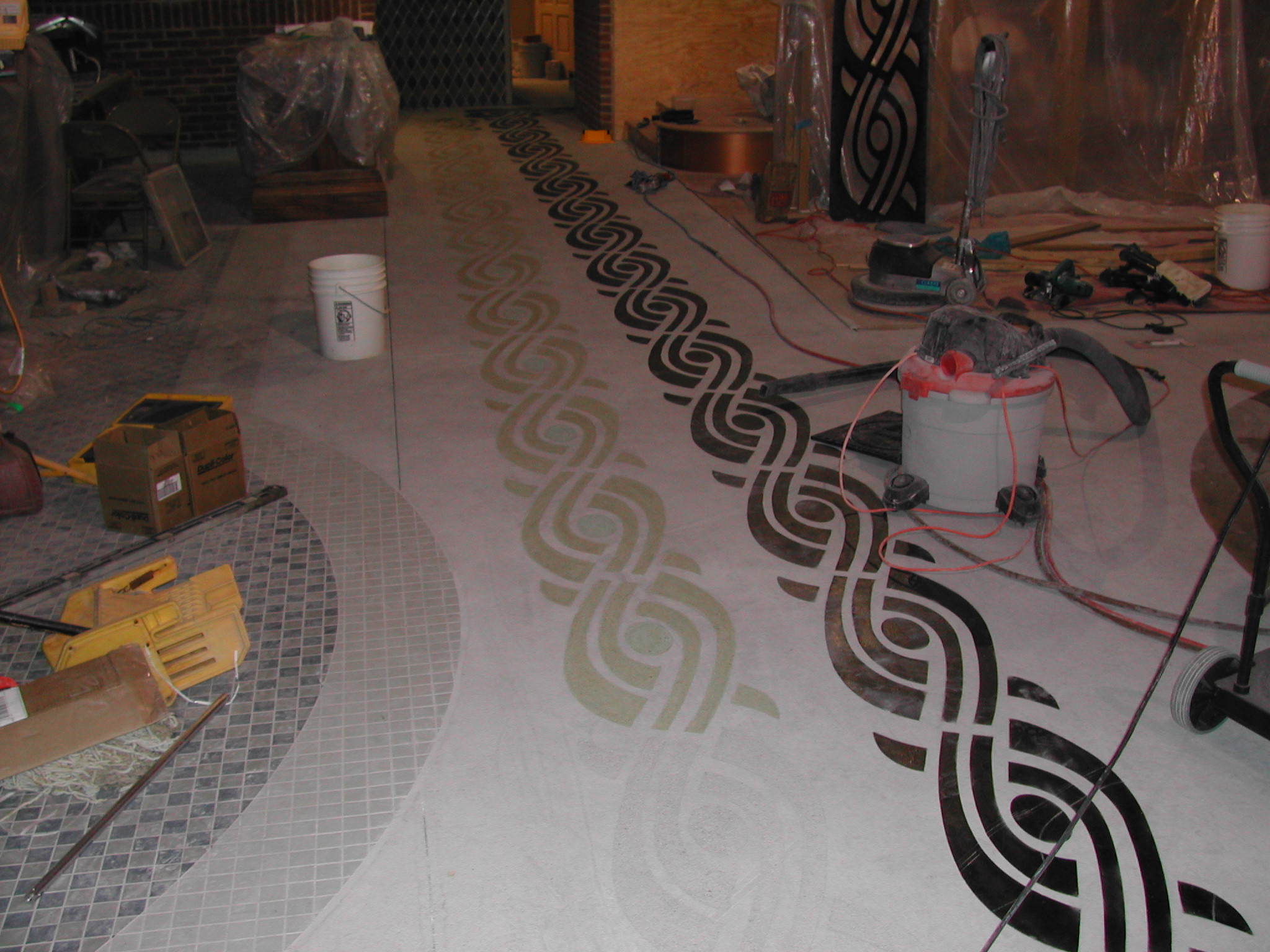This concrete retaining wall stairway was sprayed with a thin cement overlay, using a limestone block stencil for patterning, to blend with the limestone block foundation of the home.
Concrete stenciling
Concrete stenciling is generally used for creating patterning effects, like cobblestone, that are too complex or detailed to be cut into the floor with a concrete saw, or carved into it with concrete engraving tools.
Decorative stencil patterns can be transferred onto a concrete floor in a variety of ways. One way is for a thin cement overlay to be sprayed or troweled over a vinyl stencil, which has been temporarily affixed to the floor with a high-powered spray adhesive, like 3M or Elmer’s. Then, the stencil is removed once the overlay has set up, and hardened. This was the method used in the photo above to the right. This method is best used for repeating, grout-based patterns like brick, cobblestone, flagstone, and slate, and it may be used over an entire concrete surface, or just for a border. The final depth of the grout pattern, below the surface of the overlay, once the stencil is removed, is very shallow: generally no more than 1/16". As such, a pattern created by using this method must be protected by a hard and durable concrete sealer. See some of the most popular patterns for stenciled concrete overlays at: Artcrete Concrete Stencils.
An example of an acid-etch, concrete stencil, border pattern from Modello that is too intricate and detailed to be reproduced through concrete engraving.
Another way for concrete stenciling to be done is to etch the pattern into the concrete surface, or a cement overlay, using gelled muriatic acid. This method is best for intricate, curved patterns that require even greater attention to detail than grout-based patterns, such as stylish borders, and complex custom images, like family crests or badges, rug art and marquetry. These intricate, detailed patterns also become a permanent part of the concrete, and usually go no deeper than 1/32". The reason these types of patterns can be so precisely reproduced through etching is that gelled muriatic acid won't leach under the vinyl stencil that is temporarily affixed to the floor. See samples and read more about the stencil etching process at: Modello Designs and Surface Gel Tek.
Concrete stenciling can also be accomplished through the engraving process, as described above, for a project where a greater physical depth is desired for the pattern than can be achieved through concrete etching. Below are photos showing an example of a concrete stencil pattern that is being engraved into concrete.
A border pattern is transferred to the concrete floor in a bar using black spray lacquer and then those areas are engraved, out and acid-stained.
Blue and green acid stain were used for this concrete stencil pattern. After rinsing the excess stain residue, a clear epoxy sealer was applied.




